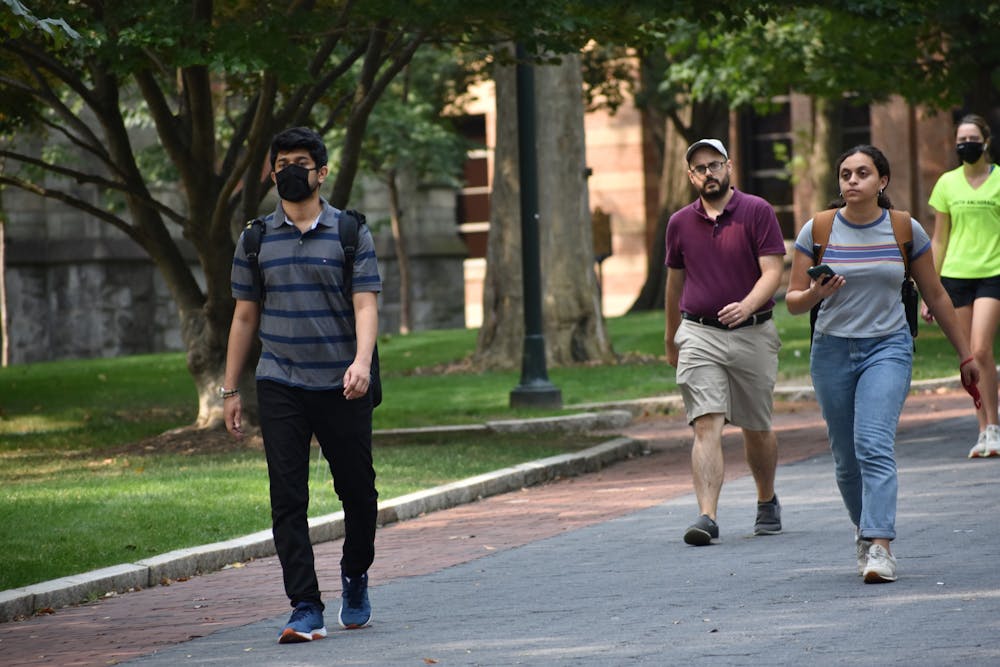
When I took MATH 114 as a first year, I thought I had reached an unparalleled level of confusion; however, reading Penn’s contradicting web of COVID-19 policies and protocols, I reached entirely new levels of confusion, frustration, and stress.
I currently live on campus with a roommate — common conditions for a first year but less common as a junior. Though we share a living space, my roommate and I are not one person: We work different jobs, attend different classes, and grab lunch with different friends, returning each night to our dorm as we do homework, grab snacks, and sleep. This natural flow of events, however, makes it such that both of us are at risk of contracting COVID-19 even if only one of us is exposed.
In fact, just this weekend, my roommate was exposed to COVID-19, forcing me to take a hard look at Penn’s policies. My roommate’s exposure to COVID-19 not only put me on edge, but also revealed the deeply flawed system Penn has in place for those unable to socially distance. While we are both vaccinated and she did not contract the virus, the lack of clear guidance from Penn felt risky and insensitive.
On Penn’s COVID-19 policy page they explain that the purpose of contact tracing is firstly to “trace and monitor contacts of infected people,” and secondly to “support the quarantine of contacts to prevent additional transmission.” The second point here would imply that those who have been exposed should be quarantined alone. So what happens when the exposed individual has a roommate? This seems like a question that should have been anticipated by Penn, but instead they have no solution.
When I was put in this situation, I was left with no choice that I truly felt comfortable with; I either had to rely on other friends to house me for a few nights until my roommate tested negative or go home. While these options were available to me, not every student at Penn has access to these avenues. Think about first years, many of whom haven’t even lived at Penn for a full month. They may not have forged the kind of friendships where they feel comfortable asking another friend in the Quad, for example, if they could crash on their floor to avoid sleeping in the same room as their roommate. Other Penn students likely don’t live in the kind of vicinity to campus where traveling home for a weekend is a viable option: Even my two-hour drive home wasn’t ideal.
Penn’s lack of stance on this predicament stems from the fact that students technically don’t need to quarantine if they are vaccinated, depending on the type of exposure they had with an infected individual. Students, however, have varying comfort levels, personal health situations, and general anxiety that puts them in an uncomfortable situation when left to share a room with an exposed roommate. Penn needs to address this situation because my personal experience is not an isolated incident.
It is not only a matter of personal comfortability, it also remains a serious public health issue in light of the decreased vaccine effectiveness and breakthrough cases caused by the Delta variant of COVID-19. Those who have spent their first year at Penn pre-COVID-19 will undoubtedly remember the pervasive nature of common colds, where seemingly everyone in ECON 001 would be coughing, sneezing, or blowing their nose. Now take those same living conditions and throw in a highly transmissible, deadly virus. It is not unreasonable for the student body living on campus to ask Penn to create a safer environment and possibly create more quarantine housing to separate roommates where one is exposed and the other is not.
ISABELLA GLASSMAN is a College junior studying philosophy, politics, and economics from Suffern, N.Y. Her email is iglass@sas.upenn.edu.
The Daily Pennsylvanian is an independent, student-run newspaper. Please consider making a donation to support the coverage that shapes the University. Your generosity ensures a future of strong journalism at Penn.
Donate







